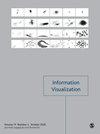Exploring annotation taxonomy in grouped bar charts: A qualitative classroom study
IF 2
4区 计算机科学
Q3 COMPUTER SCIENCE, SOFTWARE ENGINEERING
引用次数: 0
Abstract
Annotations are an essential part of data analysis and communication in visualizations, which focus a readers attention on critical visual elements (e.g. an arrow that emphasizes a downward trend in a bar chart). Annotations enhance comprehension, mental organization, memorability, user engagement, and interaction and are crucial for data externalization and exploration, collaborative data analysis, and narrative storytelling in visualizations. However, we have identified a general lack of understanding of how people annotate visualizations to support effective communication. In this study, we evaluate how visualization students annotate grouped bar charts when answering high-level questions about the data. The resulting annotations were qualitatively coded to generate a taxonomy of how they leverage different visual elements to communicate critical information. We found that the annotations used significantly varied by the task they were supporting and that whereas several annotation types supported many tasks, others were usable only in special cases. We also found that some tasks were so challenging that ensembles of annotations were necessary to support the tasks sufficiently. The resulting taxonomy of approaches provides a foundation for understanding the usage of annotations in broader contexts to help visualizations achieve their desired message.探索分组条形图中的注释分类法:课堂定性研究
注释是可视化数据分析和交流的重要组成部分,可将读者的注意力集中在关键的可视化元素上(例如,在柱状图中强调下降趋势的箭头)。注释可以增强理解力、心理组织能力、记忆力、用户参与度和互动性,对于数据外部化和探索、协作数据分析以及可视化叙事至关重要。然而,我们发现人们对如何为可视化添加注释以支持有效交流普遍缺乏了解。在本研究中,我们评估了可视化专业学生在回答有关数据的高层次问题时如何为分组条形图添加注释。我们对由此产生的注释进行了定性编码,以便对他们如何利用不同的可视化元素来传达关键信息进行分类。我们发现,所使用的注释因所支持的任务而有很大不同,有几种注释类型支持许多任务,而另一些注释类型仅在特殊情况下可用。我们还发现,有些任务极具挑战性,必须使用多种注释才能充分支持这些任务。由此产生的方法分类法为我们了解在更广泛的背景下如何使用注释来帮助可视化实现预期信息奠定了基础。
本文章由计算机程序翻译,如有差异,请以英文原文为准。
求助全文
约1分钟内获得全文
求助全文
来源期刊

Information Visualization
COMPUTER SCIENCE, SOFTWARE ENGINEERING-
CiteScore
5.40
自引率
0.00%
发文量
16
审稿时长
>12 weeks
期刊介绍:
Information Visualization is essential reading for researchers and practitioners of information visualization and is of interest to computer scientists and data analysts working on related specialisms. This journal is an international, peer-reviewed journal publishing articles on fundamental research and applications of information visualization. The journal acts as a dedicated forum for the theories, methodologies, techniques and evaluations of information visualization and its applications.
The journal is a core vehicle for developing a generic research agenda for the field by identifying and developing the unique and significant aspects of information visualization. Emphasis is placed on interdisciplinary material and on the close connection between theory and practice.
This journal is a member of the Committee on Publication Ethics (COPE).
 求助内容:
求助内容: 应助结果提醒方式:
应助结果提醒方式:


